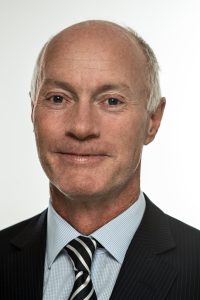
Based on casual conversation with Canadian endovascular specialists, it seems as though when compared to Europe and the US, Canada is behind in addressing veno-occlusive disease. One of the world leaders of venous interventional medicine is Professor Gerry O’Sullivan from University Hospital Galway in Ireland. We had the pleasure of interviewing Professor O’Sullivan.
Professor O’Sullivan is a consultant interventional radiologist at University Hospital Galway, Ireland. Previously, he held a consultant radiologist position at Rush University Medical Center in Chicago. Prof. O’Sullivan completed his basic medical training (MBBS) at University College Cork, Ireland.
CAIR: Veno-occlusive disease in Canada is under explored compared to the EU and US with many patients being left untreated. I understand this may have been the case in Ireland, where you saw a need. Can you elaborate?
GS: I think this represents a significant opportunity for Vascular positions and particularly interventional radiologists.
At the present time, venous ulcer patients are probably the most underserved and underrepresented portion of any vascular disease space, despite the fact that they suffer, often needlessly, and absorb huge taxpayer dollars and resources and clinic time and nurse time and bandages and dressings and wound care clinics etc. etc.
Interventional radiologists and other vascular experts can certainly help with these patients, and they are incredibly grateful; and with the skill set that most IRs already have, they are in a position to profoundly and positively affect patients’ lives.
After my initial IR training in England, I went to Stanford in California where I was exposed to, at the time, some very forward thinking people back in 1998. I then spent 3 1/2 years in Chicago and realized that my future lane was not so much an aortic dissection, which is what I had intended, but more so venous disease.
When I came back to Ireland in 2002 I could see that, frankly, it was pretty neglected. Acute thrombotic events patients at that time were simply offered anticoagulation, and we have managed to change this to some extent.
I now offer the full gamut of venous interventions apart from arteriovenous malformations which I referred to a colleague in Dublin, two hours away. Apart from that, I do venous reflux disease, SVC obstruction, IVC obstruction, acute DVT, chronic venous obstruction, venous ulcer treatment, varicocele embolization, pelvic vein embolizations, and cancer related embolization, the list is endless. By and large I have given up arterial disease apart from embolization – I’m not saying it’s the only way to do things, it’s just the way I’ve done things and it’s work for me.
CAIR: Management of veno-occlusive disease has evolved over the years. Can you highlight some of the more significant breakthroughs and how they have changed your practice?
GS: Venous thrombosis techniques are now very efficient for removing large volumes of thrombus thanks to pharmacomechanical thrombolysis and very low-dose thrombolytics, so the days of five days of catheter directed thrombolysis are well and truly over. Around 90% of patients can be treated by thrombectomy device and occasionally in the remaining 10%, we put them on catheter directed thrombolysis overnight. After their thrombectomy Venous stents are a big help. Better diagnostics are a big help to, as we have gotten much better at MRV thanks to help from some European centres.
I think venous disease is under-represented on the diagnostic radiology and interventional radiology curriculum and I certainly have learnt a great deal after my training.
CAIR: A loaded question: How would you recommend starting up and maintaining a veno-occlusive service?
- Educating other physicians
- Recruiting patients
- Multidisciplinary clinic
- Patient follow-up
GS: All of the above. I frankly am a “vein lover” as opposed to a “vain lover”!! I have no hesitation in making sure that the vascular lab contacts me first for acute deep vein thrombosis management, they generally do. The Vascular Surgeons are quite happy to dump all of this on me, I gladly except, be it acute events, chronic or acute on chronic thrombosis. Most interventional radiologists already have their foot in the door of the Nephrologists with AV fistula maintenance and HD line induced central veno-occlusive disease, and so it naturally leads from one to the other and there’s absolutely no shortage of work.